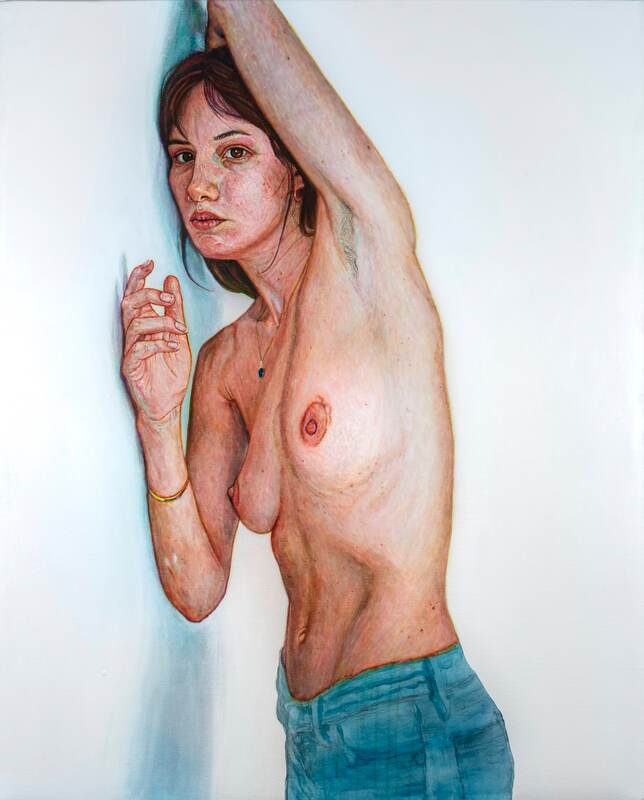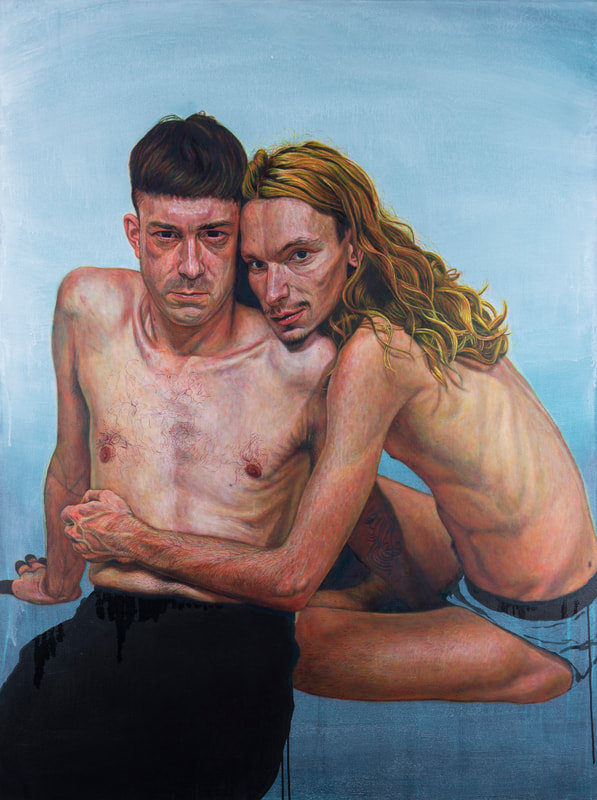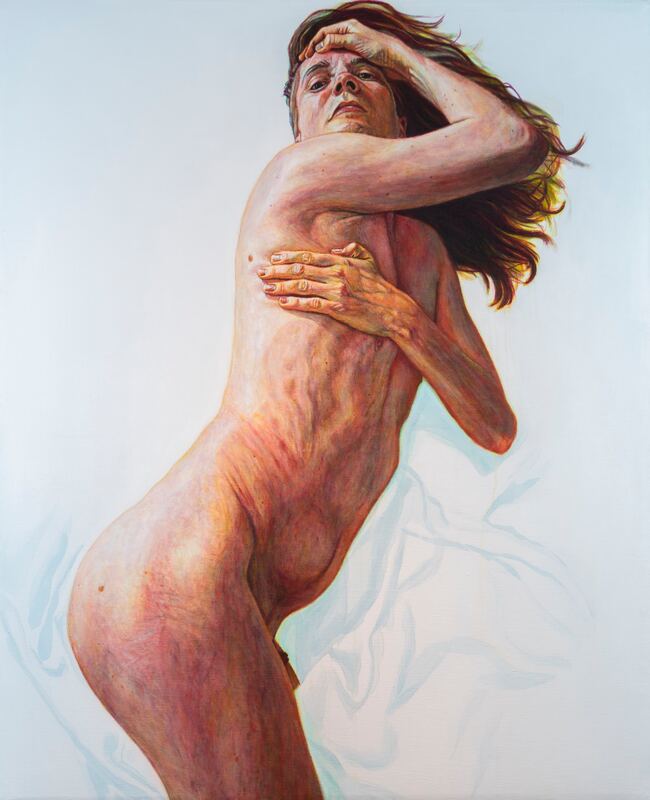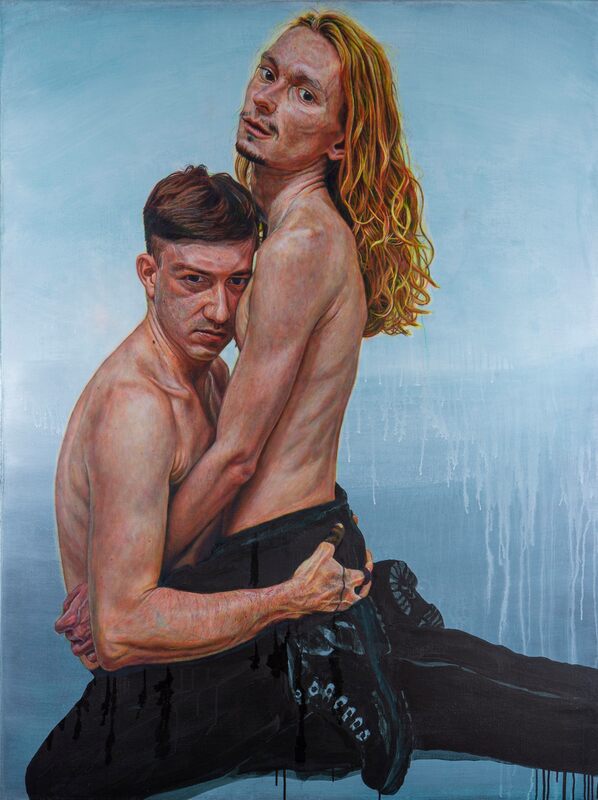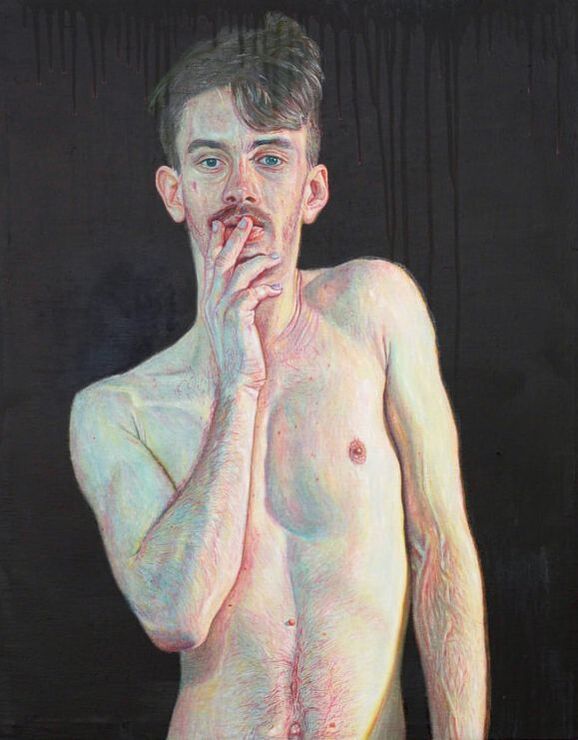The Swedish artist Klementsson likes to confuse her audience conceptually by having men pose like women and vise versa. In doing so, Klementsson argues that gender is also an illusion.an article written by Carmen Line Hust
ARTICULATE #27 | APRIL 2021 The Swedish artist Cecilia Ulfsdotter Klementsson (b. 1990) paints fleshy bodies reinterpreting nudes from fashion advertising by switching genders and extracting colours in the skin. Keeping John Berger’s Ways of seeing in mind, Klementsson takes the nude to naked in painted appropriations, from incorporeal to corporeal. Poses in the archives of 1990s and early 2000s fashion advertising feed Klementsson’s work, an era when big fashion brands particularly pushed the boundaries of the nude, with Kate Moss in the forefront. While Klementsson takes inspiration from the suggestive poses, she also twists them by having men pose like women and women pose like men. When we are confronted with opposites, differences in male and female poses become all more apparent - women seductive but passive, men seductive but active.
The second aspect challenged in Klementsson’s work is the monochromatic skin tones used in advertising, letting the nude seem more sculptural and less morbid - perhaps a strategy for big fashion brands to get away with nudity. Klementsson limits herself to four colours only, layered on top of each other like a manual silk screen printing process. There is a paradox in the colours because they are beautiful yet uncanny while they reveal the fragility of the flesh. It is the mortality which advertising avoids. The viewer sees something is odd while men pose like women in a transparent iridescent skin, daring the viewer to be drawn to them despite their colourful flaws.
The creative drive of Klementsson is generated from what she calls a restlessness inside of her. This anxious feeling makes her want to paint, which she has been doing since her childhood. To Klementsson there’s no other medium, than oil paint, that depict flesh in a trustworthy way, for which this remains her preferred medium. Her paintings, as she exclaims, are all about fleshiness and the transparency of the skin, which makes it vulnerable. To Klementsson, oil is also a transparent medium, meaning it’s possible to get vibrant colors, straight out of the tube, without having to mix it and yet it preserves its transparency. |
The works of Klementsson are, as she describes them, ‘very pre-thought’, however, certain aspects or qualities within the surface do emerge on their own. Through every painting, she discovers something new. Yet the compositions and the poses of the models are ‘very much pre-thought’. When initiating a new work, Klementsson starts by choosing an image from iconic, famous and infamous nudes in fashion advertising, such as Kate Moss for Calvin Klein. Afterwards, she picks her own model and makes that model pose the same as the original image. But hey, there’s a twist. Klementsson always changes the gender, or the coded gender, to the model she’s painting and to the model she’s interpreting. Meaning that she’s painting male bodies posing like women and female bodies posing like men, as a way of distracting and confusing people and to say that gender is a performance that can be expressed simply in a pose, nothing else needed.
To Klementsson, the key element in creating a good composition is balance, which to her makes beauty. In terms of inspiration, Klementsson is highly influenced by the British painter Jenny Saville (b. 1970), the American painter Robert Mapplethorpe (1946-1989) and the Austrian painter Egon Schiele (1890-1918). According to her, they all work with the body, the fleshiness and its pose. Jenny Saville for her capability to capture fleshiness through painting. Robert Mapplethorpe for his incredible composition skills and ability to capture beauty, particularly in posing bodies. Egon Schiele for his ability to capture fragility of the flesh.
|
In their essence, the three artists each capture an aspect of Klementsson’s work: fleshiness in painting (Saville), gender fluidity in the pose (Mapplethorpe) and fragility of the flesh in its transparency (Scheile).
Klementsson limits her colors to the following four: magenta, phthalo green, cadmium red and Italian pink. Klementsson applies one color across the entire figure and let it dry before she applies the next. In doing this, she aims to extract the odd colors of human skin, and to break them down in order to build them up again. Also she uses this technique in order to give the illusion of skin color from afar. When you look closely, you’ll see the painting’s composition of a number of non-neutral base colors lying on top of each other, giving the illusion of one neutral skin color. Klementsson likes to confuse her audience, both with color illusion, but also conceptually by having men pose like women and vise versa. In doing so, Klementsson aims to make an argue that gender is also an illusion. This article about Cecilia Ulfsdotter Klementsson takes part of the 27th magazine, ARTICULATE #27. Read, download or order your print version of the full publication below.
|
SUPPORTARTICULATE
www.articulate.nu SUPPORT Monday - Friday 8:00 - 16:00 [email protected] +45 30 48 19 81 Head Quarters VAT DK40953191 |
|

